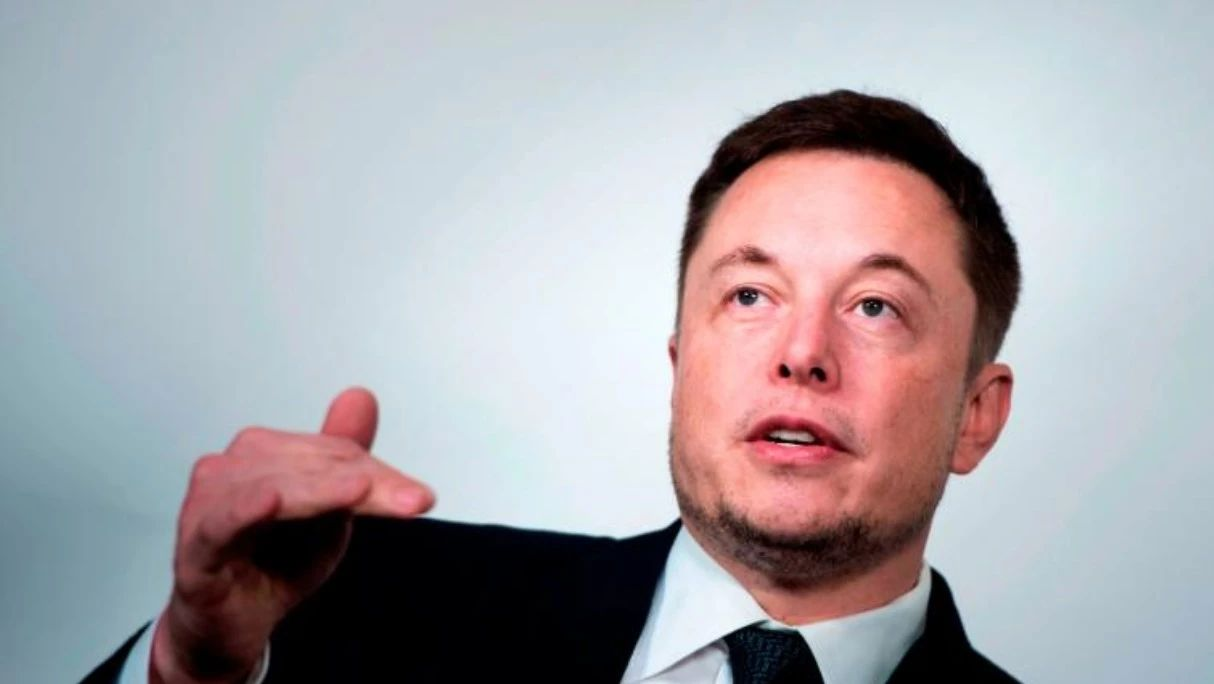The Scene Was Quite Embarrassing at One Point.
Like any publicly listed company, several Tesla executives, including CEO Elon Musk, participated in the Q1 earnings conference call after the release of the financial report. Under Elon’s efforts, we witnessed perhaps the most awkward earnings conference call ever.
Before today, we only knew that Elon liked to confront the media publicly. After today, well, the analysts need to be careful too.
Elon was not very happy at the beginning of the meeting, but he was still restrained. The first one who bumped into the muzzle was the Bernstein analyst Toni Sacconaghi. Elon mentioned that Tesla’s capital expenditure this year would be within $3 billion, while the analyst wanted to know what impact such restrained spending (last year’s capital expenditure was $3.4 billion) would have on Tesla’s capacity growth.
Tesla CFO Deepak Ahuja’s answer was that there was further room for Tesla’s capital expenditure to decline. After listening, Sacconaghi said he hoped to learn more detailed planning.
Then his call was cut off!
Then Elon’s voice came: Sorry, next question. This question is too boring. What’s the next one?
…
Then RBC Capital Markets analyst Joseph Spak asked how many Model 3 reservation owners had entered the optional configuration stage (i.e., delivery progress).
After a long silence, Elon refused to answer.
…
Finally, Elon’s voice rang out again:
We’re going to YouTube (as he promised to answer questions from YouTubers during the conference call). Your questions are too boring; you might as well kill me.
…
Elon didn’t spare the media who had conflicts with Tesla either: For any principled journalist, publishing articles that guide people to believe that autonomous driving will reduce safety is very irresponsible. Because people may turn off (Autopilot) and die. So, in any case, I am very frustrated.
If you have been following Tesla for a long time, you must have heard of Adam Jonas, a long-term Tesla bull analyst at Morgan Stanley. The New York Times once teased him as the “Tesla Cheerleader Captain.”
His question was: Many investors believe that Tesla needs financing… (not finished yet)
Elon interrupted him: I don’t agree.
Jonas: Uh, Tesla may not need financing, but do you want to?
Elon: No, I don’t want it at all.
…When answering questions from retail investors on YouTube, Elon and Tesla executives talked for over 20 minutes. At the end of the conversation, Elon thanked the YouTube blogger for asking great questions.
Professional investment analysts: ???
This textbook-level public relations disaster had an immediate impact: Tesla stock fell 5% in less than half an hour after the announcement.
Well, let’s put aside the boss’s whims and summarize the progress of Tesla’s various business lines.
Model S/X
As early as the Q1 delivery announcement on April 4th, I found that these two flagship models had entered a stable period of development. According to official plans, unless manually controlled, the production capacity of these two cars will maintain at 2,000 per week until the end of the year, corresponding to 100,000 units in annual sales.
That’s all.
Model 3
There was a lot of information about the Model 3 in this financial report.
The following is an excerpt from the financial report: “For months, our battery module production line was our main production bottleneck. After improving the existing production line and deploying multiple semi-automated production lines, we have roughly broken through this bottleneck. Even before we installed the brand new fully automated production line designed and manufactured in Germany, we were able to meet the battery module needs for 5,000 cars produced per week. The new fully automated production line will significantly reduce production costs. Currently, our automation production team in Germany is focusing on further expanding production capacity in the areas where it is needed.”
Two points to note: during the last financial report meeting, Elon announced that he expected to start large-scale laying of the new fully automated production line in Gigafactory in March. At that time, he introduced that the efficiency of the new production line will increase at least three times while occupying a smaller area. The new production line has been developed and tested in Germany, and Tesla only needs to dismantle, transport it to the United States, and assemble it.
Now it seems that it will take some time for the new production line to be put into operation, but with the 5,000 cars per week production capacity target at the end of Q2, it won’t be too long.
Secondly, the statement that “the new fully automated production line will significantly reduce production costs” reveals the reason why the Model 3 gross profit margin is negative: the cost of labor in California for implementing 7×24 three-shift work is too expensive.
In addition, here is the official “Why haven’t you ordered the Model 3 yet?” list:
-
Model 3 is the highest-quality model in every measurable aspect.
-
Model 3’s final assembly line has less than 50 workstations, reducing traditional assembly line complexity by about 70%.* All Model 3 use a standardized body frame (Model S has more than 80 different body types), with a wiring harness that reduces the weight by 50% compared to most cars, while only using a small number of controllers, connectors, and CPUs.
-
Model 3’s battery features advanced battery management, cooling systems, and structure. The battery used in Model 3 has the highest energy density among all electric vehicles. Tesla achieves this goal by significantly reducing the cobalt content of each battery pack, increasing the nickel content, and maintaining excellent thermal stability.
-
Tesla’s nickel-cobalt-aluminum cathode chemistry has a lower cobalt content than the next-generation cathode (nickel-manganese-cobalt ratio of 8:1:1) produced by other battery manufacturers. Therefore, the overall weight of the Model 3, including the battery, is comparable to a gasoline car.
In fact, even in the current situation where production capacity is lower than expected, Model 3 is still unstoppable in the US market, surpassing Lexus IS, Audi A4, and BMW 3 Series, and is rapidly approaching Mercedes-Benz C-Class. With further increase in production capacity, the competition in the market is almost predictable.
Tesla Energy
At the end of May last year, Tesla first revealed that the entire 2018 solar roof production capacity was already sold out, and since then, Elon Musk has mentioned several large energy storage units, such as the 100 MWh level in South Australia, on Twitter. At that time, I predicted that the energy business would become increasingly important.
The ultimate result is that on the premise of Tesla’s strategic closure of certain sales channels and segmented markets, the energy storage business in Q1 still reached 373 MWh, solar power generation system reached 76 MW, and energy business revenue increased by 92% year-on-year.
The financial report specifically mentioned that the production of solar roofs will significantly accelerate in the second half of this year. Considering the backlog of orders from last year, this is basically a business where production capacity determines revenue.
Semi Trunk
Analysts set a trap for Elon here. Martin Daum, CEO of Daimler Trucks North America, said in an earlier interview this year that “the parameters and specifications of Tesla’s Semi Trunk violate the laws of physics, and Tesla cannot deliver it. Some of this truck’s specifications have exceeded what we can conceive.”
Elon responded sharply, stating that Tesla can now manufacture Semi Trunk with a range of 500 miles, and the production version of this truck will have a range of 600 miles. We must make trade-offs between battery charging speed and cost. Having a longer range is more important than having ultra-fast charging speed.Elon’s other updates on the Semi Truck include:
The current orders have surpassed 2000, with at least $40 million added to Tesla’s account based on the $20,000 deposit.
The key selling point of the Semi Truck is its lower cost of energy consumption, which will compete with rail transportation.
Model Y
Regarding this anticipated future model, Elon did not talk much.
He mainly clarified one thing: there will be very little capital expenditures for the Model Y this year, with the big investments being made next year. Other than that, the “manufacturing revolution,” “completely revamped production line Alien Dreadnought 3.0,” and “lessons learned from Model 3” have been repeatedly mentioned.
It is certain that the Model Y’s entire framework will be more integrated, with fewer wiring harnesses and more advanced electrical architecture. The so-called design and manufacturing system will be “far superior” to that of the Model 3.
Since the Fremont factory is already at capacity, the Model Y will be built in a new factory whose location will be announced before Q4 this year.
After saying this, Elon voluntarily mentioned the plan to soon finalize the location of the Gigafactory in China. All future Gigafactories will have the function of producing cars.
Another personnel change related to China is that Ren Yuxiang, Tesla’s former Vice President of Global and APAC Sales and Service, has been promoted to President of Global Sales and Service.
Autopilot
Tesla will release Autopilot’s safety report quarterly.
Elon stated during the conference call that there is no doubt that Autopilot reduces driving accidents. Releasing statistical data related to Autopilot performance regularly will increase transparency and allow the public to better understand whether it is improving or declining.
Tesla’s Autopilot driving miles are steadily increasing. The driving mileage under Autopilot mode has reached one third and even around half in some areas. However, when there is news of an autopilot accident, the usage of Autopilot declines. This places Tesla owners in greater danger and makes Elon frustrated.
In addition, he reiterated that Tesla will develop Level 4 autonomous driving from a technical standpoint, but the specific launch date will depend on sufficient communication with local regulatory authorities and will be completed by the end of next year.Regarding the Tesla Network, a platform for using self-driving cars for ride-sharing, Elon claimed that Tesla owners will have full control over their vehicles and it will be obvious to share unused cars with others. Therefore, Tesla will build a software platform to manage the autonomous car-sharing network.
“I think our advantage is very clear, we’ll have a fleet of millions of self-driving cars in the future.”
Well, that sounds great, but how about ramping up the Model 3 production capacity first?


This article is a translation by ChatGPT of a Chinese report from 42HOW. If you have any questions about it, please email bd@42how.com.
